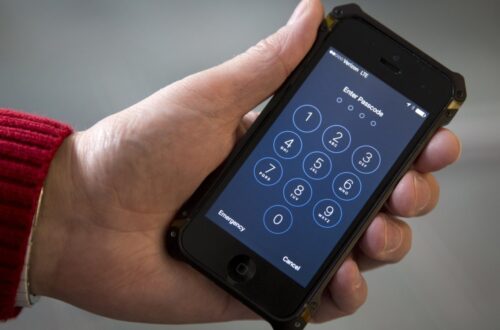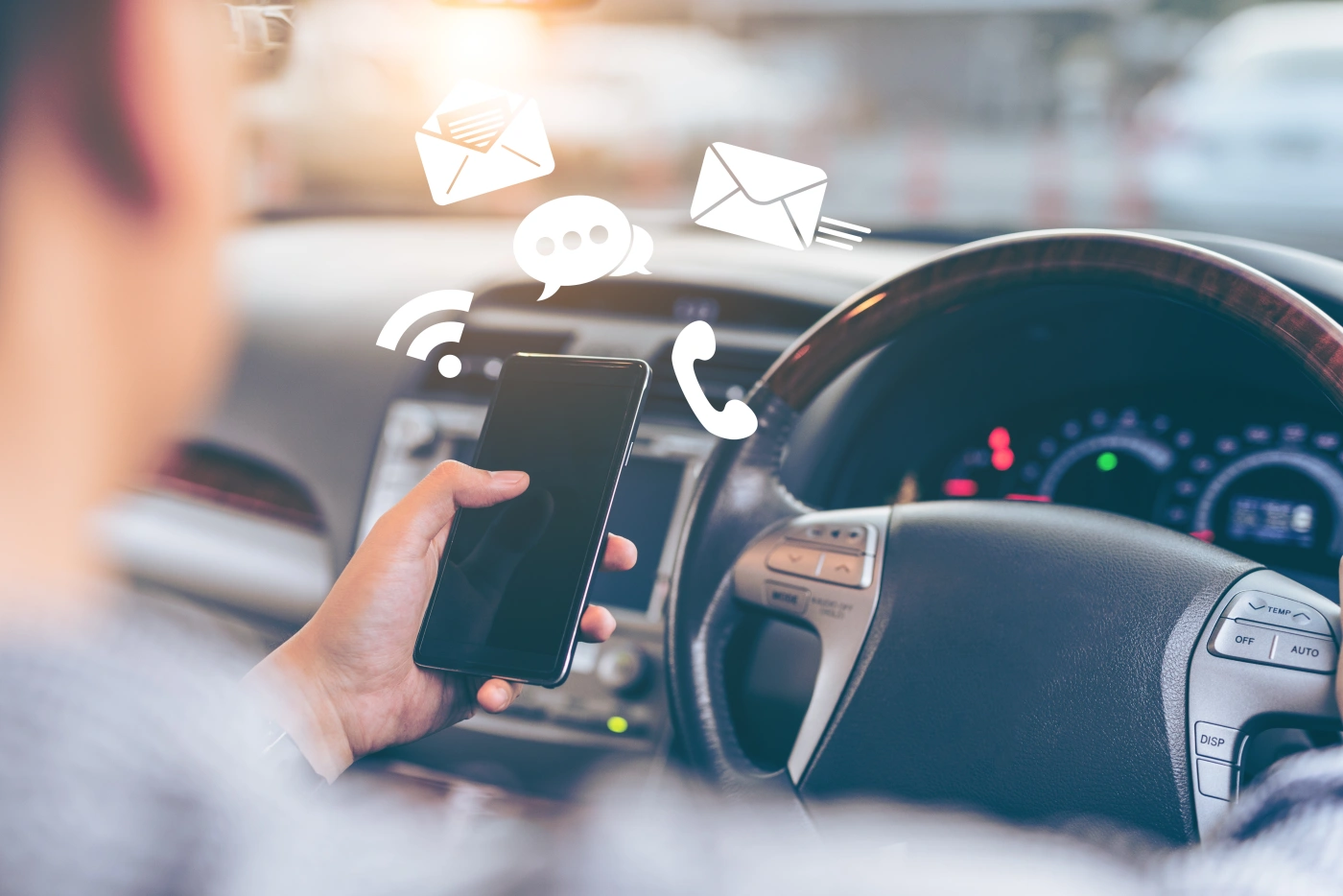To prevent cellphone-related accidents while driving, eliminate distractions by keeping your focus on the road. Obey traffic laws, stay alert, and anticipate other drivers' actions to guarantee safety. Use hands-free devices like Bluetooth headsets to stay connected without distractions. Implement emergency protocols by maintaining a contact list and storing emergency supplies in the car. Promote responsible passenger behavior by emphasizing safety guidelines and respecting the driver's focus. Enhancing your road safety requires vigilance and proactive measures.
Understanding the Risks
Understanding the risks associated with using your cellphone while driving is important for your safety on the road. When you take your eyes off the road to check a text message or make a call, you greatly increase the chances of getting into an accident. Even a momentary distraction can have severe consequences. Research shows that texting while driving makes you 23 times more likely to crash. Additionally, talking on the phone can reduce your brain activity associated with driving by 37%. This means that your reaction time is slower, putting you and others at risk. Using your cellphone while driving not only endangers your life but also the lives of pedestrians and other drivers sharing the road with you. By being aware of these risks, you can make a conscious effort to prioritize safety and avoid the temptation of using your cellphone while behind the wheel.
Setting Up Safe Driving Habits
How can you develop safe driving habits to protect yourself and others on the road? It's essential to establish routines that prioritize safety while behind the wheel. Here are three key habits to ponder:
- Eliminate Distractions: Avoid using your cellphone, eating, or engaging in any other activities that divert your focus from driving. Keep your attention on the road at all times.
- Obey Traffic Laws: Respect speed limits, traffic signals, and road signs. Following these rules not only keeps you safe but also contributes to a more organized flow of traffic.
- Stay Alert and Focused: Be aware of your surroundings, check your mirrors regularly, and anticipate the actions of other drivers. Being alert allows you to react quickly to potential hazards.
Utilizing Technology for Safety
To further enhance your driving safety, contemplate incorporating technology as a tool to aid in preventing accidents on the road. Utilizing hands-free devices such as Bluetooth headsets or car speaker systems can help you stay focused on the road while still being connected. Many smartphones also offer features like Do Not Disturb While Driving, which automatically silences notifications when it detects you are driving. Additionally, apps like Waze or Google Maps can provide real-time traffic updates, helping you plan alternative routes to avoid congestion and reduce the likelihood of accidents.
Another useful technology to ponder is dash cameras. These devices can record your journey and provide valuable evidence in case of an accident or dispute on the road. Some dash cameras even come with advanced safety features like lane departure warnings or forward collision alerts to help you stay aware of your surroundings.
Implementing Emergency Protocols
Consider incorporating an emergency response plan into your driving routine to prepare for unexpected situations on the road. Being prepared can make a significant difference in handling emergencies effectively and keeping yourself and others safe while driving.
- Emergency Contact List: Keep a list of emergency contacts in your car or programmed into your phone. This list should include numbers for emergency services, roadside assistance, and trusted individuals who can help in case of an emergency.
- Emergency Supplies: Store essential supplies like a first aid kit, flashlight, blanket, and water in your car. These items can be vital in various emergency situations, from minor accidents to breakdowns.
- Familiarize Yourself with Emergency Procedures: Take the time to understand what to do in case of different emergencies, such as accidents, car fires, or medical issues. Being familiar with proper procedures can help you react calmly and effectively during stressful situations.
Promoting Responsible Passenger Behavior
Encourage passengers to adhere to safety guidelines and avoid distractions while traveling in your vehicle. As the driver, it's essential to communicate the importance of responsible behavior to those riding with you. Remind passengers to refrain from engaging in activities that may divert your attention from the road, such as loud conversations, playing music excessively, or using their phones. Emphasize the significance of wearing seat belts at all times and refraining from actions that could startle or disrupt your focus while driving. Request that passengers respect your need to concentrate on the road by refraining from sudden movements or behaviors that could cause a distraction.
Creating a culture of safety within your vehicle not only protects you and your passengers but also contributes to overall road safety. By setting clear expectations and promoting responsible passenger behavior, you enhance the traveling experience for everyone while reducing the risk of accidents. Remember, safety is a shared responsibility, and by working together, we can guarantee a secure and pleasant journey for all.
Frequently Asked Questions
Are There Any Specific Laws or Regulations Regarding Cellphone Use While Driving in Different States or Countries?
In different states or countries, laws and regulations vary regarding cellphone use while driving. It's crucial to familiarize yourself with the specific rules in your area to guarantee you comply and stay safe on the road.
Can Using Hands-Free Devices, Such as Bluetooth Earpieces or Car-Mounted Phone Holders, Reduce the Risk of Accidents While Driving?
Using hands-free devices like bluetooth earpieces or car-mounted phone holders can help reduce accident risks while driving. They allow you to keep your hands on the wheel and eyes on the road, promoting safer driving habits.
How Can Drivers Effectively Manage Notifications and Alerts on Their Cellphones to Minimize Distractions While on the Road?
To manage notifications while driving, set your phone to Do Not Disturb mode, use voice commands for calls and messages, and pull over if urgent. Prioritize safety over notifications; it can wait.
Are There Any Specific Training Programs or Resources Available to Help Drivers Improve Their Awareness and Skills in Avoiding Cellphone-Related Accidents?
There are various training programs and resources available to help you improve awareness and skills in avoiding cellphone-related accidents. These resources can provide valuable guidance on safe driving practices and strategies to minimize distractions.
What Steps Can Passengers Take to Help the Driver Stay Focused and Safe While Using Their Cellphone in the Car?
To help the driver stay focused and safe when using their cellphone in the car, you can offer to handle calls or texts, navigate, and assist with any other tasks. Being a helpful passenger can make a big difference.
Conclusion
Remember, your safety and the safety of others on the road should always be your top priority. By understanding the risks associated with cellphone use while driving, setting up safe driving habits, utilizing technology for safety, implementing emergency protocols, and promoting responsible passenger behavior, you can help prevent cellphone-related accidents. Stay focused, stay alert, and always remember that a text or call can wait – your life and the lives of those around you are too precious to risk. Drive safely!


